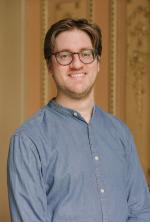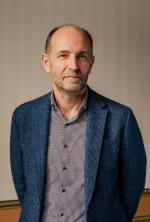
Addressing Violence in and through Objects: workshop reflections about ‘Cultural Genocide’
On Friday 31 March, twenty-five scholars from various countries, academic disciplines and cultural backgrounds came together to reflect on the concept of ‘cultural genocide’. The workshop was organized by Adieyatna Fajri MA (PhD candidate Pressing Matter and NIOD), dr. Kelly Breemen (Utrecht University), and dr. Klaas Stutje (NIOD) as part of the Pressing Matter project.
Deliberate attacks on cultural life
During the workshop, we considered the concept cultural genocide from three angles: as a recurring historical phenomenon, as a legal term that was proposed but never codified, and as a theory of violence. The concept was coined in 1944 by the Polish Jewish lawyer Raphael Lemkin in his seminal work Axis rule in Occupied Europe, as an intrinsic dimension of ‘genocide’ itself. Lemkin attempted to find a legal term to describe systematic and deliberate attacks on the cultural life of an ethnic, religious, racial or national group. The concept has caused considerable debate and controversy from the outset and was eventually excluded from the Genocide Convention of 1948, but it remains in use to this day.
It has been used, for instance, to characterize the ongoing attacks on cultural heritage during the Russian invasion of Ukraine since February 2022, but also to describe the destruction of cultural heritage sites significant to Aboriginal peoples in Australia in 2020. However, the concept is not often used to consider the presence and conspicuous absence of objects/ancestors in colonial museum collections, even though it may give us a vocabulary to discuss processes of loss, erasure, destruction and silence alongside and within processes of preservation, creation and collection.
The politics of cultural heritage
In nine presentations, the workshop participants focused on the history of the term cultural genocide and its conceptual implications, while others focused on the history and future of specific heritage and objects with a violent past. The contributions were very diverse in focus and nature, but together they allow for a number of observations, conclusions and suggestions of ways forward.
Among the presenters were Eeva-Kristiina Nylander (University of Oulu, Finland) and Sektiadi (Universitas Gadjah Mada, Yogyakarta). They spoke about the return and resocialization of a traditional women’s headdress from the National Museum of Finland to the Sámi community, and about the imprint of colonialism in Indonesian museums and their collections. They reminded us that the histories of colonialism and violent acquisition of objects are not self-evidently the most dominant aspects of the new narrative after restitution, and that a deconstruction of nationalist narratives and male perspectives are also part of the ‘re-indigenization’ of knowledge. During the discussion, Marieke Bloembergen (KITLV and Leiden University) stressed that narratives and discussions around cultural heritage are in essence always political, and that ‘heritage’ is not a neutral given term. Klaas Stutje (NIOD) added to that that material culture, the destruction and collection of it, and possible restitutions are also socially layered histories, in which gender and class analyses should play a major role.
Material and immaterial cultural repression
Adieyatna Fajri (NIOD) noted that the destruction of cultural property is a very important, but not the only episode in the cultural biography of a heritage object. It is but one of the many tumultuous chapters that heritage objects experience, a prelude to other, potentially conflicting chapters in an endless narrative of heritage formation. Thijs Bouwknegt (NIOD) pointed out that the day’s discussion about cultural genocide in relation to objects and collections seemed preoccupied with the material dimension of reparation. This was surprising to him, as discussions about cultural genocide often tend to focus on the immaterial and mental aspects of cultural repression. His comment reminds us that material objects are necessarily always part of an immaterial world of signification, power struggle and repression, that also needs to be taken into account.
Floris Kunert (NIOD) observed the value of discussing the concept of cultural genocide alongside many alternative concepts and characterizations of violence. It became very clear that the concept itself has a specific history, with strengths and limitations. The historicisation and conceptual clarification of the term make clear that it should not be simply used as a conceptual place-holder for extreme cultural violence, or a moral or sentimental short-hand for violent histories of collecting. To Kunert’s remark we may add that cultural genocide as a ‘travelling concept’ invites us to reflect on loss, destruction and erasure in relation to presently existing objects and collections, but that we are still struggling to find a suitable vocabulary to address less systematic or fundamental attempts to destroy and recreate cultural heritage.
Future research and workshops
The discussions around the concept of Cultural Genocide and the discourse around processes of destruction, erasure and colonial recreation will be used and developed further in the Pressing Matter PhD research project of Adieyatna Fajri. His project considers the destruction in 1832 of the royal palace of Banten in Indonesia by the troops of Daendels, the role of the destruction in the emergence of a new Bantenese cultural identity in later decades, and the presence and absence of objects and sites related to that history.
Secondly, the discussions of this first workshop will continue in a second workshop which, as we hope, will take place in Indonesia, and which addresses aspects of resilience and resourcefulness in responses to legacies of cultural violence and destruction.
For a longer version of this blog, with contributions per speaker, click here.


